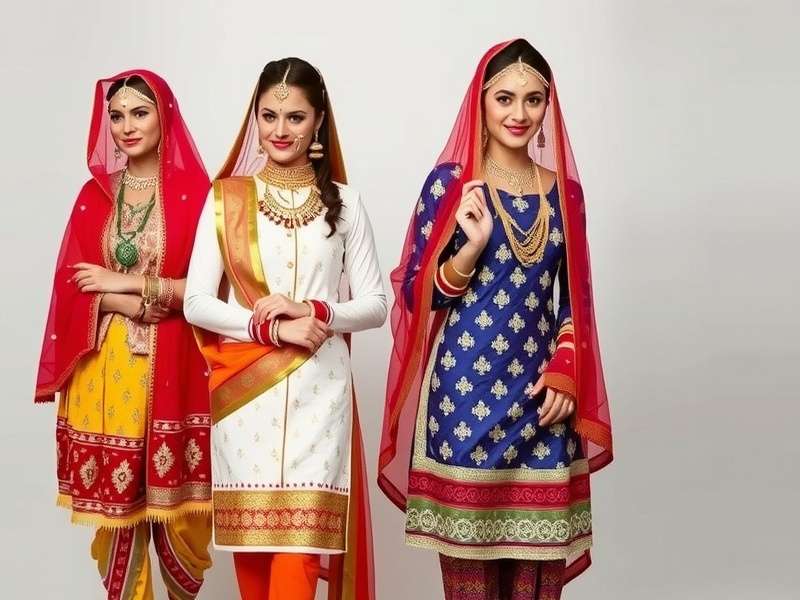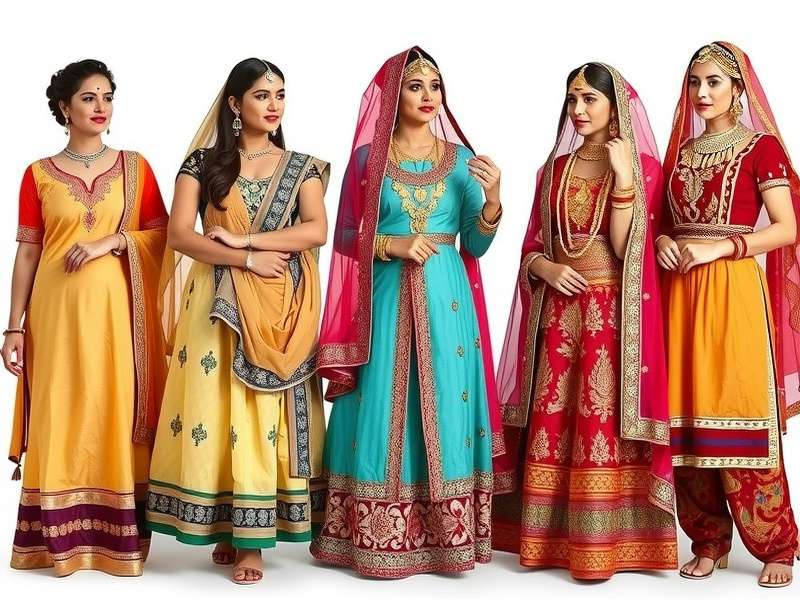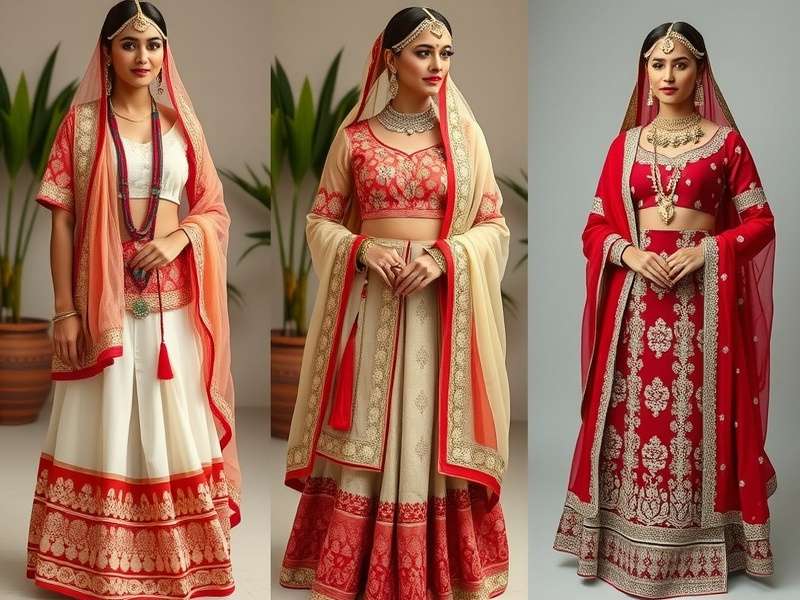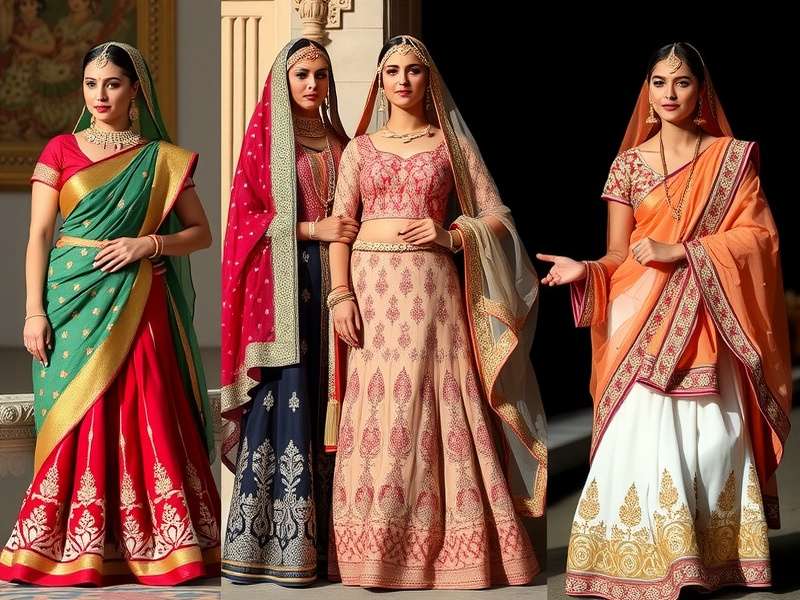Overview of Rajasthani Traditional Wear
Rajasthani Traditional Wear represents one of India's most vibrant and culturally rich clothing traditions. 🎨 The distinctive styles, colors, and fabrics used in Rajasthani Traditional Wear reflect the desert landscape, royal heritage, and artistic traditions of Rajasthan.
Key Insight: Rajasthani Traditional Wear is not just clothing but a living cultural artifact that tells the story of Rajasthan's history, climate, and social customs.
The traditional attire varies across different regions of Rajasthan but shares common elements that make Rajasthani Traditional Wear instantly recognizable. From the elaborate ghagra choli worn by women to the distinctive turbans (pagri) worn by men, each element has cultural significance.
What makes Rajasthani Traditional Wear particularly fascinating is how it has evolved while maintaining its traditional roots. Modern designers frequently draw inspiration from these traditional forms, creating contemporary fashion that honors heritage.
Historical Significance
The history of Rajasthani Traditional Wear dates back centuries, with influences from various ruling dynasties and trading communities. The clothing styles were shaped by practical considerations of the desert climate as well as the need to display social status and regional identity.
Royal patronage played a significant role in the development of elaborate textiles and embroidery techniques that characterize Rajasthani Traditional Wear. The intricate craftsmanship was often a symbol of wealth and status among the aristocracy.
Key Features of Rajasthani Traditional Wear
Women's Attire
The traditional women's outfit in Rajasthan typically consists of three main components: the ghagra (skirt), choli (blouse), and odhni (veil or dupatta). Each of these elements showcases the exceptional craftsmanship that defines Rajasthani Traditional Wear.
Ghagra: The ghagra is a long, embroidered skirt often made from vibrant fabrics with mirror work, embroidery, and gota patti (gold ribbon work). The style and decoration vary by region and occasion.
Choli: The choli is a fitted blouse that complements the ghagra. It is often elaborately decorated with embroidery, mirror work, and sometimes even precious stones for special occasions.
Odhni: This is a long veil or scarf that completes the ensemble. The odhni is not just decorative but also serves practical purposes in the desert climate.

Men's Attire
Traditional men's clothing in Rajasthan includes the dhoti or pyjama, angarkha, and pagri (turban). Each element of men's Rajasthani Traditional Wear has both practical and cultural significance.
Angarkha: This is a traditional upper garment that overlaps and ties at the side. It is typically made from cotton for daily wear and silk or other fine fabrics for special occasions.
Dhoti/Pyjama: The dhoti is a draped garment, while the pyjama is a stitched alternative. Both are comfortable in the hot climate and allow for freedom of movement.
Pagri: The turban is perhaps the most distinctive element of men's Rajasthani Traditional Wear. The style, color, and fabric of the turban can indicate the wearer's region, community, and occasion.
Textiles and Embellishments
Rajasthani Traditional Wear is renowned for its exquisite textiles and decorative techniques. Several traditional crafts contribute to the unique appearance of Rajasthani Traditional Wear.
Bandhani: This is a tie-dye technique that creates intricate patterns on fabric. Bandhani work is particularly associated with Rajasthani Traditional Wear and is used for both everyday and ceremonial clothing.
Leheriya: This is a distinctive wave-patterned tie-dye technique that is unique to Rajasthan. The diagonal stripes created through this method are instantly recognizable.
Zari and Gota Work: Metallic thread embroidery (zari) and gold ribbon work (gota) are used to create lavish decorations on special occasion wear.
Mirror Work: Small mirrors are embroidered onto fabric, creating a sparkling effect that is particularly striking in sunlight.
Regional Variations in Rajasthani Traditional Wear
Rajasthan is a diverse state with distinct regional cultures, and this diversity is reflected in variations of Rajasthani Traditional Wear across different areas.
Marwari Style
The Marwari community has a distinctive style of Rajasthani Traditional Wear characterized by specific colors, patterns, and accessories. The ghagras are often voluminous with specific pleating styles.
Marwari women's odhnis typically feature specific traditional patterns and are draped in a particular manner that distinguishes them from other regional styles of Rajasthani Traditional Wear.
Mewari Style
Mewari Rajasthani Traditional Wear is known for its specific color palettes and embroidery styles. The traditional leheriya pattern is particularly associated with this region.
Mewari men's turbans have a distinctive style and method of tying that sets them apart from other regional variations of Rajasthani Traditional Wear.

Shekhawati Style
The Shekhawati region has its own distinctive elements within Rajasthani Traditional Wear, particularly in the use of specific colors and decorative motifs influenced by the region's famous frescoes.
Shekhawati style ghagras often feature specific geometric patterns and color combinations that reflect the artistic heritage of the region.
Visual Gallery of Rajasthani Traditional Wear
Explore the visual diversity of Rajasthani Traditional Wear through this curated collection showcasing different styles, occasions, and regional variations.

The visual appeal of Rajasthani Traditional Wear is not just in the clothing itself but in how it is accessorized with traditional jewelry, footwear, and other elements that complete the traditional look.
From daily wear to elaborate wedding ensembles, Rajasthani Traditional Wear adapts to different occasions while maintaining its distinctive cultural identity.
Cultural Significance of Rajasthani Traditional Wear
Rajasthani Traditional Wear is deeply intertwined with the cultural and social life of Rajasthan. It serves multiple functions beyond mere clothing, making it an essential aspect of cultural identity.
Social and Ritual Functions
Specific types of Rajasthani Traditional Wear are associated with particular life events, festivals, and rituals. The choice of clothing communicates important social information.
Wedding attire represents some of the most elaborate forms of Rajasthani Traditional Wear, with specific colors, fabrics, and embellishments prescribed for different communities and regions.
Cultural Insight: The colors used in Rajasthani Traditional Wear often have symbolic meanings. For example, red is associated with marriage and yellow with spring festivals.
Economic Aspects
The production of Rajasthani Traditional Wear supports numerous traditional crafts and artisan communities. The textile industry centered around these traditional forms provides livelihoods for many.
From weavers and dyers to embroiderers and tailors, the creation of authentic Rajasthani Traditional Wear involves multiple specialized skills that have been passed down through generations.
Contemporary Relevance
While modern clothing has become commonplace in urban areas, Rajasthani Traditional Wear remains important for cultural events, festivals, and ceremonies. It continues to evolve while maintaining traditional elements.
Designers frequently reinterpret elements of Rajasthani Traditional Wear for contemporary fashion, helping to keep these traditions alive and relevant in the modern world.
User Reviews and Community Feedback
The cultural appreciation for Rajasthani Traditional Wear extends beyond Rajasthan, with people across India and around the world admiring and adopting elements of this traditional clothing style.
Popularity Metrics
Based on cultural engagement data, interest in Rajasthani Traditional Wear has shown consistent growth, with particular spikes during festival seasons and wedding periods.
Online searches for Rajasthani Traditional Wear have increased significantly in recent years, reflecting growing interest in traditional Indian clothing styles among younger generations.
User Experiences
Many people who have adopted elements of Rajasthani Traditional Wear report appreciation for the craftsmanship, comfort, and cultural connection it provides.
The vibrant colors and intricate designs of Rajasthani Traditional Wear are frequently cited as particularly appealing aspects that distinguish it from other traditional clothing styles.

Community Engagement
Online communities dedicated to Rajasthani Traditional Wear have grown substantially, with members sharing styling tips, historical information, and sources for authentic pieces.
Social media platforms feature numerous influencers specializing in Rajasthani Traditional Wear, demonstrating how to incorporate traditional elements into modern wardrobes.
Explore More About Rajasthani Traditional Wear
Deepen your understanding and appreciation of this rich cultural tradition
Access exclusive content, detailed guides, and connect with other enthusiasts of Rajasthani Traditional Wear